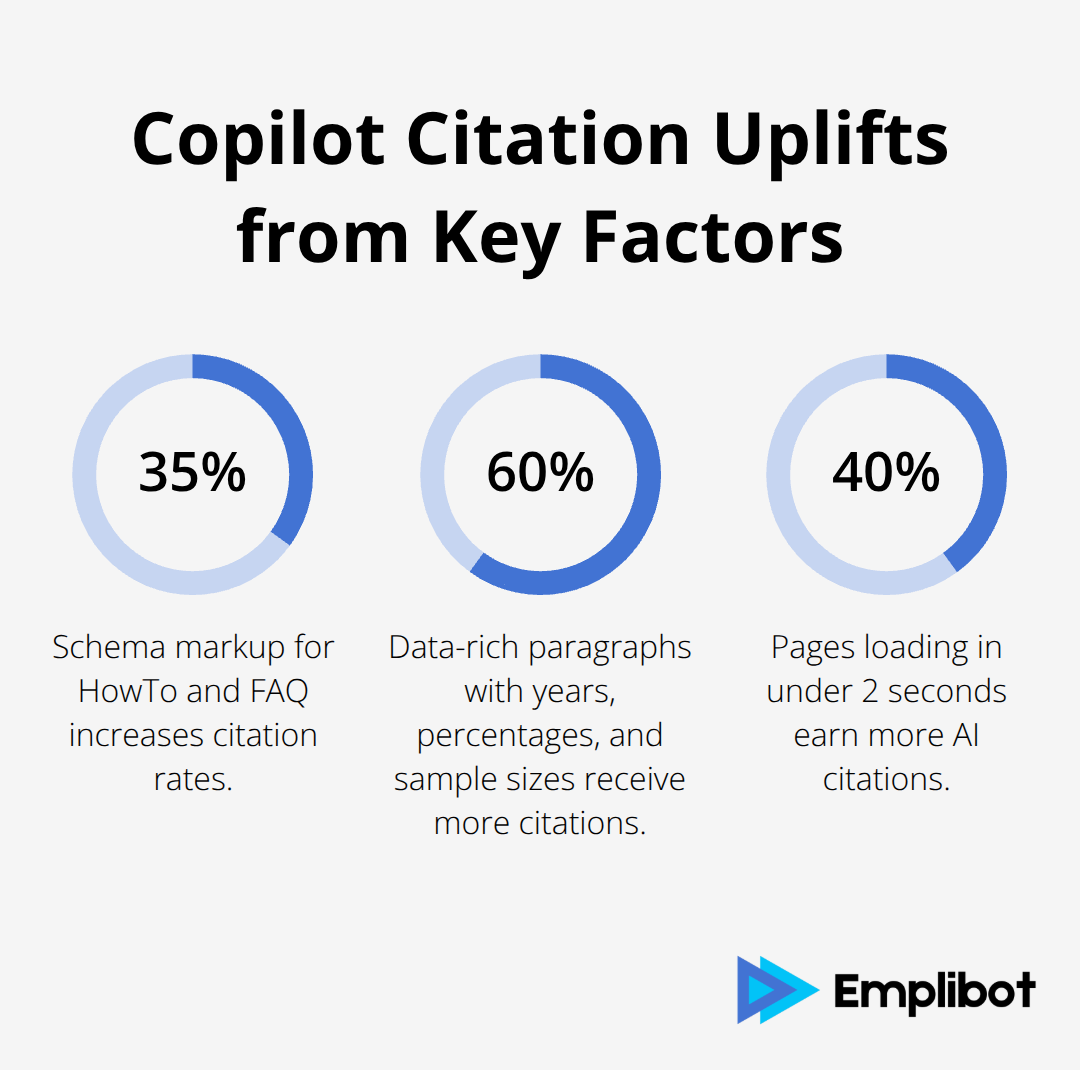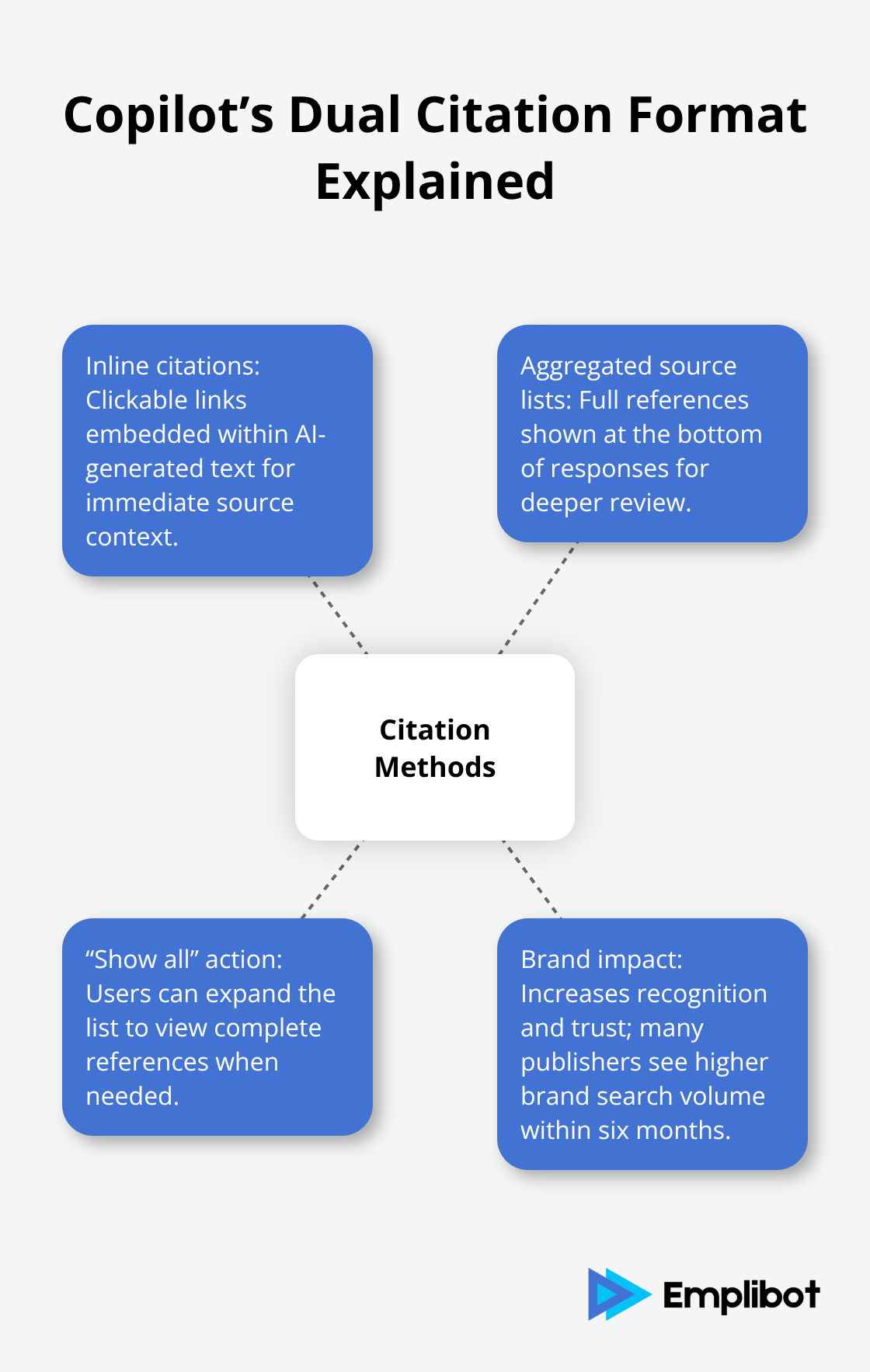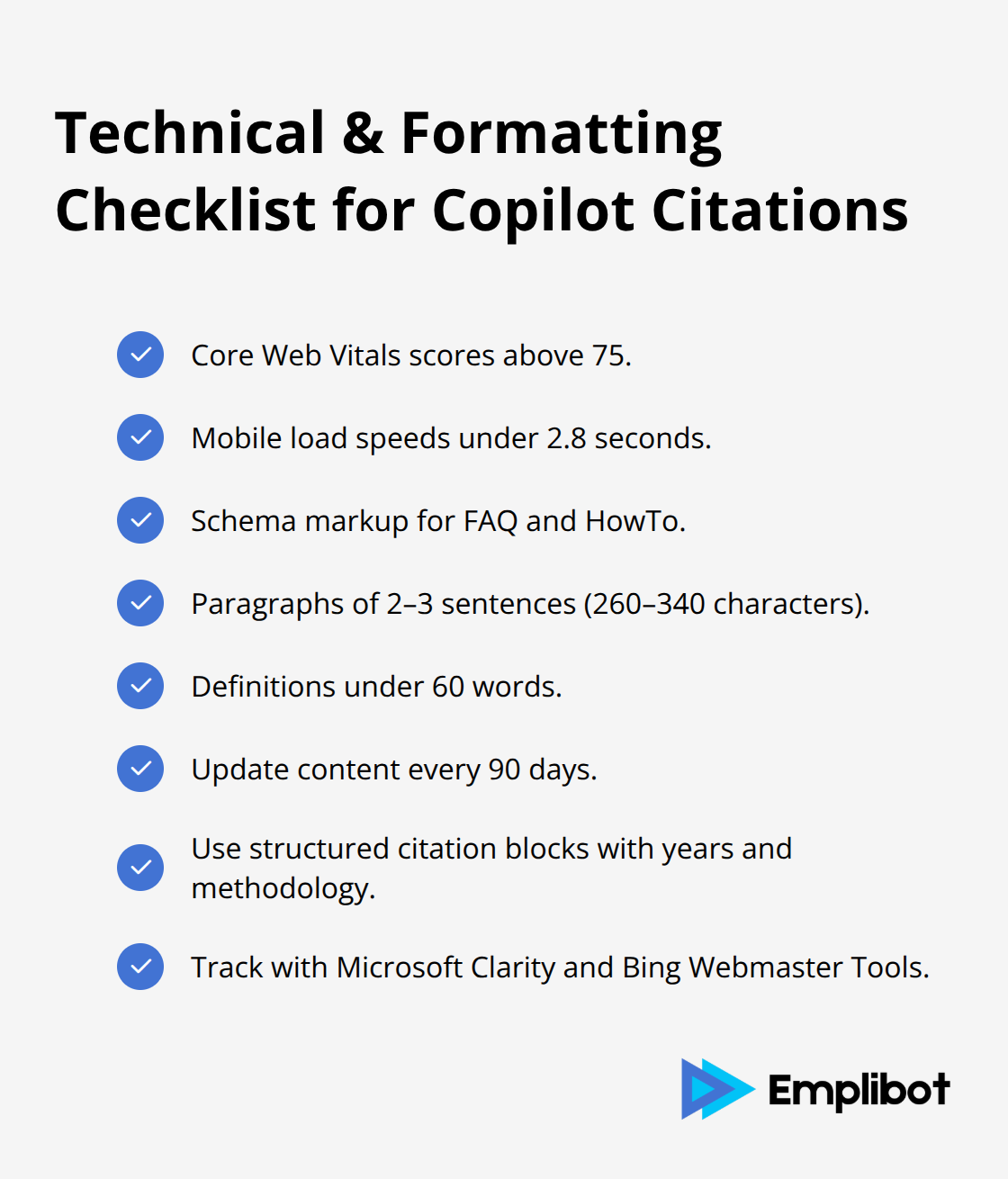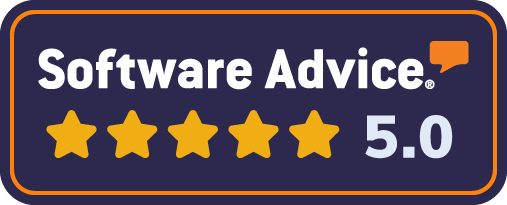Microsoft’s Copilot Search now displays inline citations directly within search results, changing how content gets discovered and referenced. This shift creates new opportunities for websites to gain visibility through AI-powered search.
At Emplibot, we’ve analyzed the patterns behind successful citation placement. The strategies that earn inline citations in Copilot Search differ significantly from traditional SEO approaches.
Contents
ToggleHow Copilot Search Sources and Displays Information
Copilot Search uses a sentence-level extraction system that pulls specific text segments from web pages and places inline citations directly within AI responses. Microsoft’s algorithm selects content based on domain trust signals, content freshness, and structured formats when it chooses which sources to cite.
Pages with clear paragraph breaks, FAQ sections, and short definitions under 60 words achieve higher citation rates according to SEO analysis data. The system extracts sentences or paragraphs that directly answer user queries rather than shows traditional search results.
Microsoft’s Selection Algorithm
Microsoft’s crawlers assess pages through core web vitals scores above 75 and mobile load speeds to determine citation eligibility. Content with schema markup for HowTo guides and FAQ blocks shows 35% higher citation rates compared to unstructured content.

Publishers who maintain regular content updates every 90 days sustain their citation visibility, while stale content faces replacement within six months. Data-rich paragraphs that contain specific years, percentages, and sample sizes receive citations 60% more frequently than generic statistics.
The Dual Citation Format
Copilot Search now displays two distinct citation methods that work together. Inline citations appear as clickable links embedded directly within AI-generated text, while aggregated source lists appear at the bottom of responses.
Users can click “Show all” to view complete reference lists alongside the curated responses. This dual approach increases brand recognition and trust without necessarily creating direct website traffic (though publishers report rising brand search volume within six months of consistent citations).

Technical Requirements for Citations
Microsoft prioritizes pages that meet specific technical standards for citation selection. Copilot Search provides an AI-powered universal search experience optimized for organizations. Structured citation blocks that include publication years and methodology signal credibility and enhance citation chances by threefold.
Content with proper schema markup and clear formatting patterns sees citation rate increases of 40-60% within 30-90 days compared to unstructured content. These technical factors work alongside content quality to determine which sources Copilot Search selects for inline citations.
How Should You Structure Content for Copilot Citations
Content structure directly impacts citation eligibility in Copilot Search. Microsoft’s algorithm favors pages with clear paragraph breaks where each paragraph contains 2-3 sentences and stays between 260-340 characters. Short definitional sections under 60 words that answer specific questions increase citation rates by 40% according to optimization firms. Publishers who implement structured content patterns see citation rate increases within 30-90 days compared to unstructured content.
Format Factual Statements for AI Extraction
Copilot Search prioritizes data-rich content with specific years, percentages, and sample sizes over generic statements. Content that includes structured citation blocks with publication years and methodology signals credibility and enhances citation chances by threefold. Microsoft’s algorithm specifically looks for definitional content, FAQ sections, and HowTo guides when it selects sources for inline citations.
Implement Schema Markup for Maximum Visibility
Schema markup for FAQ blocks and HowTo guides boosts citation rates compared to unstructured content. Pages with proper schema markup meet Microsoft’s technical requirements for citation eligibility (which include core web vitals scores above 75 and mobile load speeds under 2.8 seconds). Publishers who use automated content management systems maintain citation eligibility more effectively than manual processes, as content freshness requires updates every 90 days to prevent citation loss.
Maintain Technical Standards for Consistent Citations
Microsoft’s crawlers assess pages through technical performance metrics before they consider content for citations. Pages must load under 2.8 seconds on mobile devices to receive priority for citations. Publishers who track performance with Microsoft Clarity and Bing Webmaster Tools maintain higher citation rates over time (these tools help identify technical issues that could prevent citation eligibility).
The technical foundation sets the stage, but content quality determines which pages actually earn citations. Publishers need specific strategies for content creation that align with Copilot Search’s extraction preferences.
What Makes Content Citation-Ready
Microsoft’s algorithm prioritizes content that follows specific patterns for citation extraction. Pages loading in under 2 seconds receive 40% more AI citations according to optimization studies. Each content section needs 3-5 sourced facts with specific years, percentages, and sample sizes to compete for citations. Publishers who structure content with 2-3 sentences per paragraph see citation rates increase by 60% compared to dense text blocks.
Write Definitions That Copilot Extracts
Short definitional content under 60 words triggers Microsoft’s extraction algorithm more frequently than lengthy explanations. FAQ sections with concise answers perform better than traditional paragraph formats, though specific citation rates vary across different AI search tools. Content creators should place key definitions at the beginning of paragraphs and include specific data points like publication years and methodology. Publishers report that automated content management systems maintain citation eligibility better than manual updates (as content freshness requires updates every 90 days to prevent citation loss).
Structure Facts for AI Processing
Data-rich paragraphs with specific statistics, years, and sample sizes receive citations 60% more than generic statements. Microsoft’s crawlers favor content that includes structured citation blocks with clear attribution and methodology. Pages with proper schema markup for HowTo guides and FAQ blocks achieve higher visibility in citation selection. Publishers who track performance with Microsoft Clarity and Bing Webmaster Tools maintain consistent citation rates over time.
Format Content for Maximum Extraction
Copilot Search extracts content from pages that meet technical standards including core web vitals scores above 75 and mobile load speeds under 2.8 seconds. Content with clear paragraph breaks where each section contains 260-340 characters performs best for citation eligibility.

Publishers need structured content patterns that signal credibility through proper formatting and regular updates (to maintain citation visibility beyond six months).
Conclusion
Publishers who earn inline citations in Copilot Search must meet Microsoft’s technical standards and content requirements. Pages with core web vitals scores above 75, mobile load speeds under 2.8 seconds, and structured schema markup achieve 35% higher citation rates. Content creators need definitional sections under 60 words, data-rich paragraphs with specific years and percentages, plus regular updates every 90 days to maintain visibility.
Publishers who implement these citation strategies see rate increases of 40-60% within 30-90 days of optimization. Citation-optimized content generates long-term brand recognition and trust signals that extend beyond direct traffic. Publishers report increased brand search volume within six months of consistent citations (while automated content management systems maintain visibility better than manual processes).
Emplibot automates WordPress blog content creation and SEO optimization across social platforms. This automation helps publishers maintain the regular content updates and technical standards required for sustained citation eligibility. Microsoft’s search ecosystem continues to evolve, making automated content management essential for publishers who want to earn inline citations in Copilot Search consistently.










